 W
WThe 1A2 Key Telephone System is a business telephone system developed and distributed by the Western Electric Company for the Bell System.
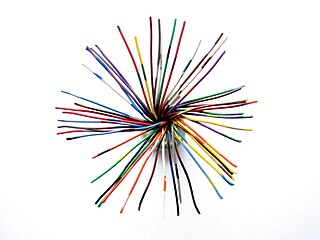 W
WThe 25-pair color code, originally known as even-count color code, is a color code used to identify individual conductors in twisted-pair wiring for telecommunications.
 W
WA 66 block is a type of punchdown block used to connect sets of wires in a telephone system. They have been manufactured in three sizes, A, B, and M. A and B have six clips in each row while M has only 4. The A blocks have the rows spaced farther apart and have been obsolete for many years. The B style is used mainly in distribution panels where several destinations need to connect to the same source. The M blocks are often used to connect a single instrument to such a distribution block. 66 blocks are designed to terminate 22 through 26 AWG solid copper wire. The 66 series connecting block, introduced in the Bell System in 1962, was the first terminating device with insulation displacement connector technology. The term 66 block reflects its Western Electric model number.
 W
WA 110 block is a type of punch-down block used to terminate runs of on-premises wiring in a structured cabling system. The designation 110 is also used to describe a type of insulation displacement contact (IDC) connector used to terminate twisted pair cables, which uses a punch-down tool similar to the type used for the older 66 block.
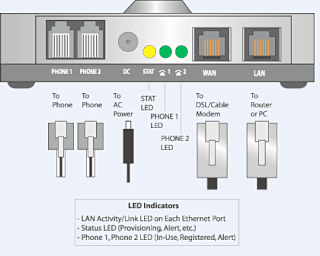 W
WAn analog telephone adapter (ATA) is a device for connecting traditional analog telephones, fax machines, and similar customer-premises devices to a digital telephone system or a voice over IP telephony network.
 W
WAT&T Merlin is a corporate telephone system by American Telephone and Telegraph (AT&T) that was introduced in late 1983, when it was branded American Bell Merlin. After the breakup of AT&T in 1984, it was rebranded and later also supplied by Lucent and Avaya.
 W
WThe Bell System Practices (BSPs) is a compilation of technical publications which describes the best methods of engineering, constructing, installing, and maintaining the telephone plant of the Bell System under direction of AT&T and Bell Telephone Laboratories. Covering everything from accounting and human resources procedures through complete technical descriptions of every product serviced by the Bell System, it includes a level of detail specific to the best way to wrap a wire around a screw, for example.
 W
WA business telephone system is a multiline telephone system typically used in business environments, encompassing systems ranging in technology from the key telephone system (KTS) to the private branch exchange (PBX).
 W
WThe Calculagraph is a device which mechanically calculates and prints the elapsed time between two events. Their best known, earliest use was as a means of tracking of table usage in pool halls. Later, until the advent of the digital era, they became the standard way to clock the duration of toll telephone calls.
 W
WThe candlestick telephone is a style of telephone that was common from the late 1890s to the 1940s. A candlestick telephone is also often referred to as a desk stand, an upright, or a stick phone. Candlestick telephones featured a mouth piece (transmitter) mounted at the top of the stand, and a receiver that was held by the user to the ear during a call. When the telephone was not in use, the receiver rested in the fork of the switch hook protruding to the side of the stand, thereby disconnecting the audio circuit from the telephone network.
 W
WThe Carterfone is a device invented by Thomas Carter. It manually connects a two-way radio system to the telephone system, allowing someone on the radio to talk to someone on the phone. This makes it a direct predecessor to today's autopatch.
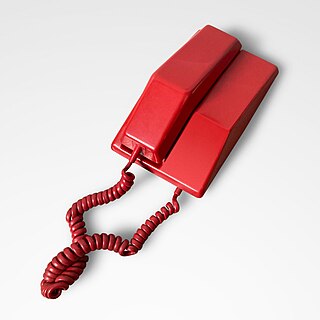 W
WThe Contempra is a telephone designed and produced by Northern Electric beginning in 1967. Contempra was the first phone designed in Canada, previous Canadian sets having been designed in the US for Western Electric and built under licence.
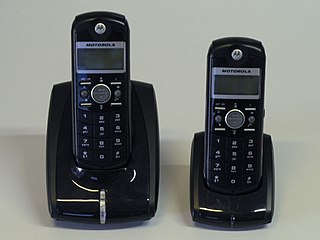 W
WA cordless telephone or portable telephone is a telephone in which the handset is portable but able to be used like landline phone communication, only it operates by radio frequency transmission and not a physical insulated wire, or telephone line. The base station is connected to the telephone network through a telephone line as a corded telephone is, and also serves as a charger to charge the handset's batteries. The range is limited, usually to the same building or some short distance from the base station.
 W
WIn telephony, the demarcation point is the point at which the public switched telephone network ends and connects with the customer's on-premises wiring. It is the dividing line which determines who is responsible for installation and maintenance of wiring and equipment—customer/subscriber, or telephone company/provider. The demarcation point varies between countries and has changed over time.
 W
WIn telecommunications, a distribution frame is a passive device which terminates cables, allowing arbitrary interconnections to be made.
 W
WThe Bakelite phone (bakelittelefon) officially known as Ericsson DBH 1001, and later as M33, N1020, and ED 702, was a Swedish line of telephones made from the polymer Bakelite and produced for over thirty years between 1931 and 1962.
 W
WEricsson Dialog is a Swedish telephone model by Ericsson, released 1964. Millions of the model were sold and it retained its place in homes well into the 1990s. The Ericsson company presented King Carl XVI Gustaf of Sweden with a unique handmade Dialog telephone on his 40th birthday.
 W
WA telephone exchange, telephone switch, or central office is a telecommunications system used in the public switched telephone network (PSTN) or in large enterprises. It interconnects telephone subscriber lines or virtual circuits of digital systems to establish telephone calls between subscribers.
 W
WAn extension bell or extension ringer is a device that generates a sound to indicate an incoming telephone call, but is not included in a telephone set itself.
 W
WField telephones are telephones used for military communications. They can draw power from their own battery, from a telephone exchange, or from an external power source. Some need no battery, being sound-powered telephones.
 W
WFritz!Box, stylised as FRITZ!Box, is a series of residential gateway devices produced by the German company AVM GmbH. In 2010 it was estimated the series had a market share of 68% of the digital subscriber line (DSL) consumer equipment in Germany.
 W
WA golden telephone is a rotary telephone made of or plated with gold. It is popularly associated with opulent decadence, representing power, wealth and elitism. Golden telephone sets were notably presented to Pope Pius XI in 1930 and to the Cuban dictator Fulgencio Batista in 1957.
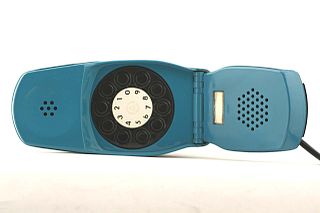 W
WThe Grillo telephone was designed in 1965 by Marco Zanuso and Richard Sapper. The telephone was manufactured in Italy by Società Italiana Telecomunicazioni Siemens
 W
WA handset is a component of a telephone that a user holds to the ear and mouth to receive audio through the receiver and speak to the remote party via the built-in transmitter.
 W
WHeadsets connect over a telephone or to a computer, allowing the user to speak and listen while keeping both hands free. They are commonly used in customer service and technical support centers, where employees can converse with customers while typing information into a computer. Also common among computer gamers are headsets, which will let them talk with each other and hear others, as well as use their keyboards and mice to play the game.
 W
WThe K-36 trailer was a telephone pole hauling trailer used by the U.S. Army during and after World War II.
 W
WKrone LSA-PLUS is an insulation-displacement connector for telecommunications. It is a proprietary European alternative to 110 block. The Krone LSA-PLUS system is not limited to telecommunications, as it is also popular in broadcast systems, where audio interconnections and their associated control systems often use krone wiring. Multipair audio cables have been specifically designed for the system by organisations such as the BBC.
 W
WA lineman's handset is a special type of telephone used by technicians for installing and testing local loop telephone lines. It is also called a test set, butt set, or buttinski.
 W
WA loading coil or load coil is an inductor that is inserted into an electronic circuit to increase its inductance. The term originated in the 19th century for inductors used to prevent signal distortion in long-distance telegraph transmission cables. The term is also used for inductors in radio antennas, or between the antenna and its feedline, to make an electrically short antenna resonant at its operating frequency.
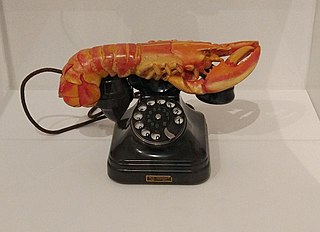 W
WLobster Telephone is a Surrealist object, created by Salvador Dalí in 1936 for the English poet Edward James (1907–1984), a leading collector of surrealist art. In his 1942 book The Secret Life of Salvador Dalí, Dalí wrote teasingly of his demand to know why, when he asked for a grilled lobster in a restaurant, he was never presented with a boiled telephone.
 W
WIn telephony, a main distribution frame is a signal distribution frame for connecting equipment to cables and subscriber carrier equipment.
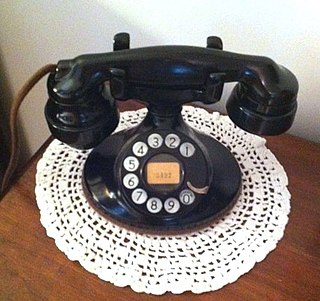 W
WThe model 102 telephone was a version of Western Electric's first widely distributed telephone set that featured the transmitter and receiver in a common handset. Although this type designation was not used before ca. 1930, predecessor types were produced starting approximately in 1927 with the A handset mounting, and the B handset mounting in 1928. Earlier telephones by Western Electric had been of the candlestick type which featured a transmitter fixed to the base, and a receiver held by the user to the ear. The design of the A handset mounting was inherited from the candlestick desk stands, while the B-type was slightly reshaped. Although the B handset mounting was produced until 1932, Western Electric introduced a newly designed models, the D handset mounting in 1930, which had an oval foot print to improve physical stability during dialing.
 W
WThe model 202 telephone was a desktop telephone produced by Western Electric for the Bell System from 1930 to 1939, and by Northern Electric in Canada. Refurbished units were installed into the mid-1950s. It was an updated version of the 102-type telephone, containing the newly developed anti-sidetone circuitry to reduce electronic feedback from the transmitter (mouthpiece) to the receiver (earpiece).
 W
WThe model 302 telephone is a desk set telephone that was manufactured in the United States by Western Electric from 1937 until 1955, and by Northern Electric in Canada until the late 1950s, until well after the introduction of the 500-type telephone in 1949. The sets were routinely refurbished into the 1960s. It was one of the most widely used American combined telephone sets to include the ringer and network circuitry in the same telephone housing.
 W
WThe Western Electric model 500 telephone series was the standard domestic desk telephone set issued by the Bell System in North America from 1950 through the 1984 Bell System divestiture. Millions of model 500-series phones were produced and were present in most homes in North America. Many are still in use today because of their durability and ample availability. Its modular construction compared to previous types simplified manufacture and repair, and facilitated a large number of variants with added features.
 W
WThe Motorola APCOR was a 12 watt, paramedic telemetry radio produced by the Motorola company during the 1970s and 1980s. The Motorola APCOR could transmit voice and EKG simultaneously and was battery operated. There were three or more versions of the Motorola APCOR, the first was similar to the Biophone, the second was significantly smaller and was white. The third version of the Motorola APCOR was all white.
 W
WMulti-Frequency signalling, (MF), is similar to the European version, CCITT Signaling System 5, (SS5). The original format was five tones used in pairs. This later evolved to six tones. Because its six tones are used only in pairs, this signaling format is sometimes referred to as "two-out-of-five code" or "two of six."
 W
WIn telecommunications, a network interface device is a device that serves as the demarcation point between the carrier's local loop and the customer's premises wiring. Outdoor telephone NIDs also provide the subscriber with access to the station wiring and serve as a convenient test point for verification of loop integrity and of the subscriber's inside wiring.
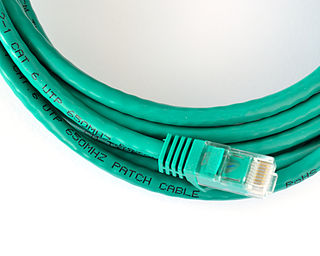 W
WA patch cable, patch cord or patch lead is an electrical or optical cable used to connect one electronic or optical device to another for signal routing. Devices of different types are connected with patch cords.
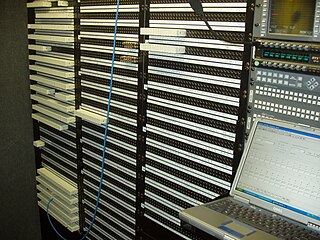 W
WA patch panel is a device or unit featuring a number of jacks, usually of the same or similar type, for the use of connecting and routing circuits for monitoring, interconnecting, and testing circuits in a convenient, flexible manner. Patch panels are commonly used in computer networking, recording studios, and radio and television.
 W
WThe Prairie Grove Airlight Outdoor Telephone Booth is a telephone booth installed at the southwest corner of East Douglas and Parker Streets in Prairie Grove, Arkansas, United States. It is an early example of the Airlight, the first American mass-produced weather-resistant metal telephone booth, which made possible widespread installation of outdoor payphones. In 2015, it became the first phone booth on the National Register of Historic Places.
 W
WThe push-button telephone is a telephone that has buttons or keys for dialing a telephone number, in contrast to having a rotary dial as in earlier telephone instruments.
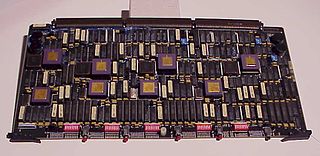 W
WThe quad digital audio processor (QDAP) was a digital signal processor (DSP) based printed circuit card designed at Computer Consoles Inc. (CCI) in Rochester, NY. The QDAP was a service circuit module developed as part of the companies digital telephony switching system. The main function of the card was the processing of incoming digital audio to detect the speech patterns using speaker independent speech recognition. The CCI digital switch was deployed as part of the Digital Audio Intercept System, Automatic Voice Response (AVR), and Interactive Voice System (IVS) products. The initial QDAP board is notable for introducing speech recognition into the public telephone network to automate the handling of operator assisted telephone calls.
 W
WA radiotelephone, abbreviated RT, is a radio communication system for transmission of speech over radio. Radiotelephony means transmission of sound (audio) by radio, in contrast to radiotelegraphy, which is transmission of telegraph signals, or television, transmission of moving pictures and sound. The term may include radio broadcasting systems, which transmit audio one way to listeners, but usually refers to two-way radio systems for bidirectional person-to-person voice communication between separated users, such as CB radio or marine radio. In spite of the name, radiotelephony systems are not necessarily connected to or have anything to do with the telephone network, and in some radio services, including GMRS, interconnection is prohibited.
 W
WA reed relay is a type of relay that uses an electromagnet to control one or more reed switches. The contacts are of magnetic material and the electromagnet acts directly on them without requiring an armature to move them. Sealed in a long, narrow glass tube, the contacts are protected from corrosion. The glass envelope may contain multiple reed switches or multiple reed switches can be inserted into a single bobbin and actuate simultaneously. Reed switches have been manufactured since the 1930s.
 W
WThe Reis telephone was an invention named after Philipp Reis of a telephone-like device he constructed. Reis's first successful work is dated to October 1861.
 W
WA shoe phone is a shoe that has a telephone within it. Though there is no specific evidence that spies or those involved in espionage actually used shoe phones, they were popularised by fictional spies in television shows, most notably the television series Get Smart. Modern mobile phone technology has allowed for the development and production of working shoe phones.
 W
WA sound-powered telephone is a communication device that allows users to talk to each other with the use of a handset, similar to a conventional telephone, but without the use of external power. This technology has been used since at least 1944 for both routine and emergency communication on ships to allow communication between key locations on a vessel if power is unavailable. A sound-powered phone circuit can have two or more stations on the same circuit. The circuit is always live, thus a user begins speaking rather than dialing another station. Sound-powered telephones are not normally connected to a telephone exchange.
 W
WThe StingRay is an IMSI-catcher, a cellular phone surveillance device, manufactured by Harris Corporation. Initially developed for the military and intelligence community, the StingRay and similar Harris devices are in widespread use by local and state law enforcement agencies across Canada, the United States, and in the United Kingdom. Stingray has also become a generic name to describe these kinds of devices.
 W
WGeorge H. Sweigert (1920–1999) is credited as the first inventor to patent the cordless telephone.
 W
WThe telephone desk is the smallest kind of fixed desk. Its traditional role is to provide a working surface barely large enough to write notes while speaking on the telephone, and in some cases to support the telephone or hold telephone books. In early generations of telephones the phone apparatus itself had a small desk built in. This was most common in wall mounted telephones of the end of the 19th and the beginning of the 20th century.
 W
WA telephone hook or switchhook is an electrical switch which indicates when the phone is hung up, often with a lever or magnetic button inside the cradle or base where a telephone handset resides. It takes its name from old wooden wall telephones and candlestick telephones, where the mouthpiece was mounted on the telephone box and, due to sidetone considerations, the receiver was separate, on a cable. When the telephone was not in use, the receiver was hung on a spring-loaded hook; its weight would cause the hook to swing down and open an electrical contact, disconnecting something, but not the telephone from the line or the phone could not ring. When the handset is on the cradle, the telephone is said to be "on-hook", or ready for a call. When the handset is off the cradle, the telephone is said to be "off-hook", or unable to receive any (further) calls.
 W
WA telephone hybrid is the component at the ends of a subscriber line of the public switched telephone network (PSTN) that converts between two-wire and four-wire forms of bidirectional audio paths. When used in broadcast facilities to enable the airing of telephone callers, the broadcast-quality telephone hybrid is known as a broadcast telephone hybrid or telephone balance unit.
 W
WA telephone keypad is the keypad installed on a push-button telephone or similar telecommunication device for dialing a telephone number. It was standardized when the dual-tone multi-frequency signaling (DTMF) system was developed in the Bell System in the United States in the 1960s that replaced rotary dialing originally developed in electromechanical switching systems. Because of the installed abundance of rotary dial equipment well into the 1990s, many telephone keypads were also designed to produce loop-disconnect pulses electronically, and some could be optionally switched to produce either DTMF or pulses.
 W
WA tin can telephone is a type of acoustic (non-electrical) speech-transmitting device made up of two tin cans, paper cups or similarly shaped items attached to either end of a taut string or wire.
 W
WTip and ring are the names of the two conductors or sides of a telephone line. The terms refer to the telephone plugs used for connecting telephone calls in manual switchboards. One side of the line is connected to the metal tip of the plug, and the second is connected to a metal ring behind the tip, separated and insulated from the tip by a non-conducting material. When inserted into a jack, the plug's tip conductor connects first, followed by the ring conductor. In many European countries, tip and ring are referred to as the A and B wires.
 W
WThe Trimphone is a model of telephone designed in the late-1960s in the UK. It was positioned as a more fashionable alternative to the standard telephones available from the Post Office Telephones, the nationalised predecessor to British Telecom. The name is an acronym standing for Tone Ring Illuminator Model, referring to the then innovative electronic ringer and the illuminated dial. The luminous dial or betalight contained the mildly radioactive element tritium, which later caused some concern about safety. In June 1991 the United Kingdom Atomic Energy Authority at Harwell was fined £3,000 by Wantage Magistrates Court for accumulating radioactive waste, having collected several thousand Trimphone luminous dials in a skip.
 W
WA USB phone looks like a traditional telephone, but it has a USB connector instead of an RJ-11. It may be used with most softphones and services like Skype, Sipnet, Sippoint Mini, Net2Phone, MSN Messenger, NetMeeting, Xlite, Skype for Business.
 W
WA utility pole is a column or post used to support overhead power lines and various other public utilities, such as electrical cable, fiber optic cable, and related equipment such as transformers and street lights. It can be referred to as a transmission pole, telephone pole, telecommunication pole, power pole, hydro pole, telegraph pole, or telegraph post, depending on its application. A Stobie pole is a multi-purpose pole made of two steel joists held apart by a slab of concrete in the middle, generally found in South Australia.
 W
WThe W48 was a version of a desktop telephone lineage developed in the mid-1930s in Germany by Siemens & Halske for the German telephone and postal administration. The W48 was approved by the Deutsche Bundespost for use on the German telephone network in 1948. Various manufacturers were licensed to produce the large quantities of this type until ca. 1961, when it was replaced with the FeTAp 611.